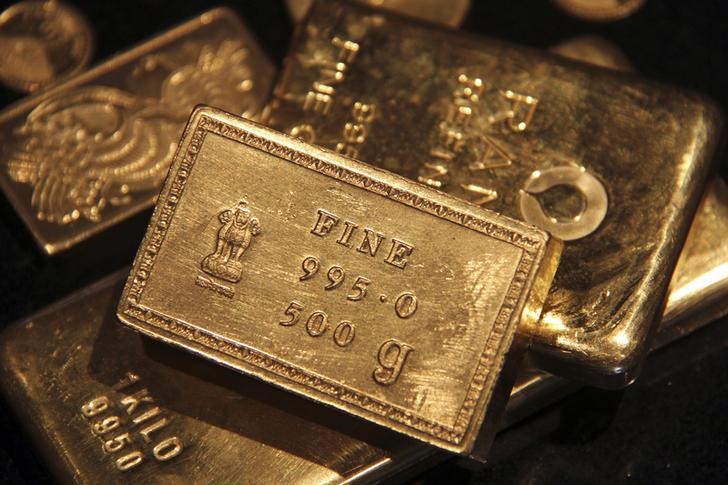By Barani Krishnan
Investing.com - Gold squeezed in its first weekly profit in four on Friday, rebounding from under $1,700 an ounce, despite a 13-month high in U.S. bond yields and a spike in the dollar that should have kept the yellow metal lower.
Gold for April delivery on New York’s Comex settled up $2.80, or 0.2%, at $1,719.80 an ounce after tumbling earlier to $1,696.65 to break key $1,700 support.
For the week though, the benchmark gold futures contract gained $21.30, or 1.3%. It was the first positive week for Comex gold after three prior weeks of losses that left longs in the yellow metals some 8% poorer.
The spot price of gold, which fund managers sometimes rely on for direction more than futures, was at $1,722.60 by 3:08 PM ET (20:08 GMT), trading flat on the day. Spot gold’s intraday low was $1,699.28.
Gold’s comeback from under $1,700 was somewhat spectacular as yields benchmarked to the U.S. 10-year Treasury note soared to 1.64%, their highest since February 2020.
The Dollar Index — which pits the greenback against six major currencies — also rose, nearing the key 92 level.
“While the dollar is not making lower lows, yields might be overdone for the time being, in some kind of consolidation mode, and I think gold is recognizing that,” said Philip Streible, analyst and broker at Blueline Futures in Chicago.
“Also, gold is extremely light-weighted now, as it’s hated so much. And when you have such extreme levels of pessimism, often you see critical turning points in the market.”
Gold’s rebound on Friday also coincided with markets’ acknowledgement that the United States may be entering a new era of inflation with President Joe Biden’s signing into law on Thursday his $1.9 trillion Covid-19 bill. The stimulus package aims to vaccinate the country’s entire adult population before Independence Day on the 4th of July; fund states and businesses; and put money into Americans’ pockets besides finding them work.
Bond yields hit prepandemic highs since last month on the argument that economic recovery in the coming months could overheat, leading to spiraling inflation, as the Federal Reserve insisted on keeping interest rates at near zero.
The dollar, which should logically tumble in an environment of heightened inflation fears, also rallied on the same logic of runaway economic recovery. The greenback’s standing as a safe haven, due to its reserve currency status, also led to new long positions being built in the dollar.
Gold prices, meanwhile, fell 2.7% in January and continued to slide 6% in February. For March, they are down about 0.5 % month-to-date.
That was despite U.S. personal income growing 10% in January, beating forecasts, after $600 checks sent out to most Americans by the former Trump administration under a previous $900 billion Covid-19 stimulus package.
Touted for decades as a go-to asset whenever there are worries about price pressures, gold has of late been systematically prevented from playing that role by Wall Street banks, hedge funds and other actors that have sold down the metal while pushing up U.S. bond yields and the dollar instead. Bitcoin, an asset that can barely prove its intrinsic value, has also cropped up as a contrarian trade, often rallying at the expense of gold.
